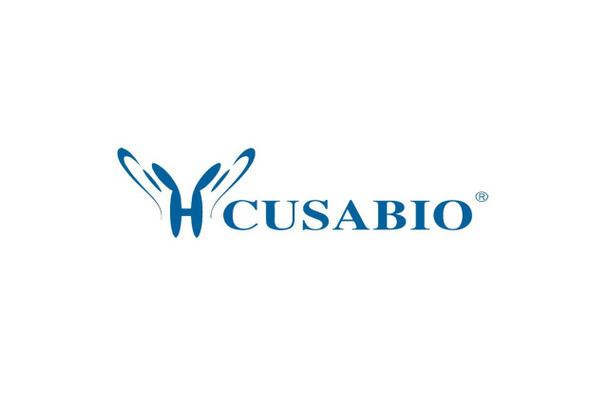Cusabio Sus scrofa Recombinants
Recombinant Pig Heat shock protein HSP 90-alpha (HSP90AA1), partial | CSB-BP010802PI
- SKU:
- CSB-BP010802PI
- Availability:
- 3 - 7 Working Days
Description
Recombinant Pig Heat shock protein HSP 90-alpha (HSP90AA1), partial | CSB-BP010802PI | Cusabio
Alternative Name(s): HSP90AA1; HSP90A; HSPCAHeat shock protein HSP 90-alpha
Gene Names: HSP90AA1
Research Areas: Signal Transduction
Organism: Sus scrofa (Pig)
AA Sequence: VEKERDKEVSDDEAEEKEDKEEEKEKEEKESEDKPEIEDVGSDEEEEEKKDGDKKKKKKIKEKYIDQEELNKTKPIWTRNPDDITNEEYGEFYKSLTNDWEDHLAVKHFSVEGQLEFRALLFVPRRAPFDLFENRKKKNNIKLYVR
Source: Baculovirus
Tag Info: N-terminal 6xHis-tagged
Expression Region: 222-367aa
Sequence Info: Partial
MW: 19.7 kDa
Purity: Greater than 90% as determined by SDS-PAGE.
Relevance: Molecular chaperone that promotes the maturation, structural maintenance and proper regulation of specific target proteins involved for instance in cell cycle control and signal transduction. Undergoes a functional cycle that is linked to its ATPase activity. This cycle probably induces conformational changes in the client proteins, thereby causing their activation. Interacts dynamically with various co-chaperones that modulate its substrate recognition, ATPase cycle and chaperone function (By similarity). Binds bacterial lipopolysaccharide (LPS) et mediates LPS-induced inflammatory response, including TNF secretion (By similarity).
Reference: "Molecular cloning and characterization of porcine cDNA encoding a 90-KDA heat shock protein and its expression following hyperthermia." Huang H.W., Lee W.C., Lin J.H., Jian S.C., Mao S.J., Yang P.C., Huang T.Y., Liu Y.C.Gene 226:307-315(1999) .
Storage: The shelf life is related to many factors, storage state, buffer ingredients, storage temperature and the stability of the protein itself. Generally, the shelf life of liquid form is 6 months at -20?/-80?. The shelf life of lyophilized form is 12 months at -20?/-80?.
Notes: Repeated freezing and thawing is not recommended. Store working aliquots at 4? for up to one week.
Function: Molecular chaperone that promotes the maturation, structural maintenance and proper regulation of specific target proteins involved for instance in cell cycle control and signal transduction. Undergoes a functional cycle that is linked to its ATPase activity which is essential for its chaperone activity. This cycle probably induces conformational changes in the client proteins, thereby causing their activation. Interacts dynamically with various co-chaperones that modulate its substrate recognition, ATPase cycle and chaperone function. Engages with a range of client protein classes via its interaction with various co-chaperone proteins or complexes, that act as adapters, simultaneously able to interact with the specific client and the central chaperone itself. Recruitment of ATP and co-chaperone followed by client protein forms a functional chaperone. After the completion of the chaperoning process, properly folded client protein and co-chaperone leave HSP90 in an ADP-bound partially open conformation and finally, ADP is released from HSP90 which acquires an open conformation for the next cycle. Apart from its chaperone activity, it also plays a role in the regulation of the transcription machinery. HSP90 and its co-chaperones modulate transcription at least at three different levels. In the first place, they alter the steady-state levels of certain transcription factors in response to various physiological cues. Second, they modulate the activity of certain epigenetic modifiers, such as histone deacetylases or DNA methyl transferases, and thereby respond to the change in the environment. Third, they participate in the eviction of histones from the promoter region of certain genes and thereby turn on gene expression. Binds bacterial lipopolysaccharide (LPS) and mediates LPS-induced inflammatory response, including TNF secretion by monocytes. Interacts with HECTD1 (via N-terminus) (By similarity).
Involvement in disease:
Subcellular Location: Nucleus, Cytoplasm, Melanosome, Cell membrane
Protein Families: Heat shock protein 90 family
Tissue Specificity: Preferentially expressed in pituitary gland, brain, adrenal gland, and testis, in comparison to other tissues.
Paythway:
Form: Liquid or Lyophilized powder
Buffer: If the delivery form is liquid, the default storage buffer is Tris/PBS-based buffer, 5%-50% glycerol. If the delivery form is lyophilized powder, the buffer before lyophilization is Tris/PBS-based buffer, 6% Trehalose, pH 8.0.
Reconstitution: We recommend that this vial be briefly centrifuged prior to opening to bring the contents to the bottom. Please reconstitute protein in deionized sterile water to a concentration of 0.1-1.0 mg/mL.We recommend to add 5-50% of glycerol (final concentration) and aliquot for long-term storage at -20?/-80?. Our default final concentration of glycerol is 50%. Customers could use it as reference.
Uniprot ID: O02705
HGNC Database Link: N/A
UniGene Database Link: UniGene
KEGG Database Link: KEGG
STRING Database Link: STRING
OMIM Database Link: N/A









